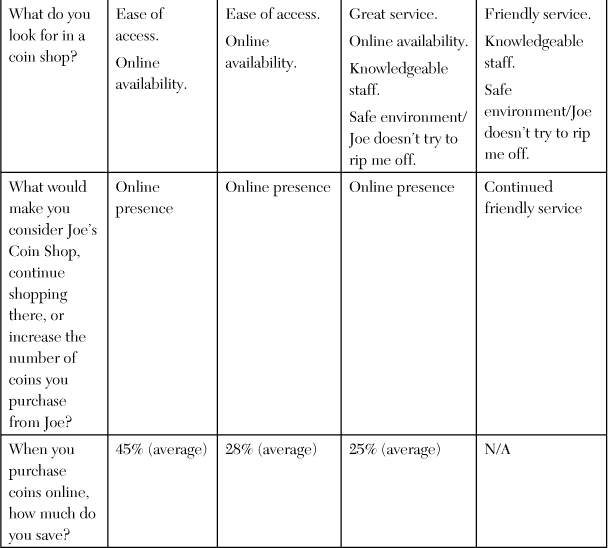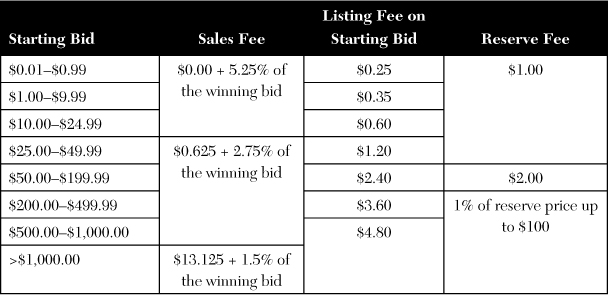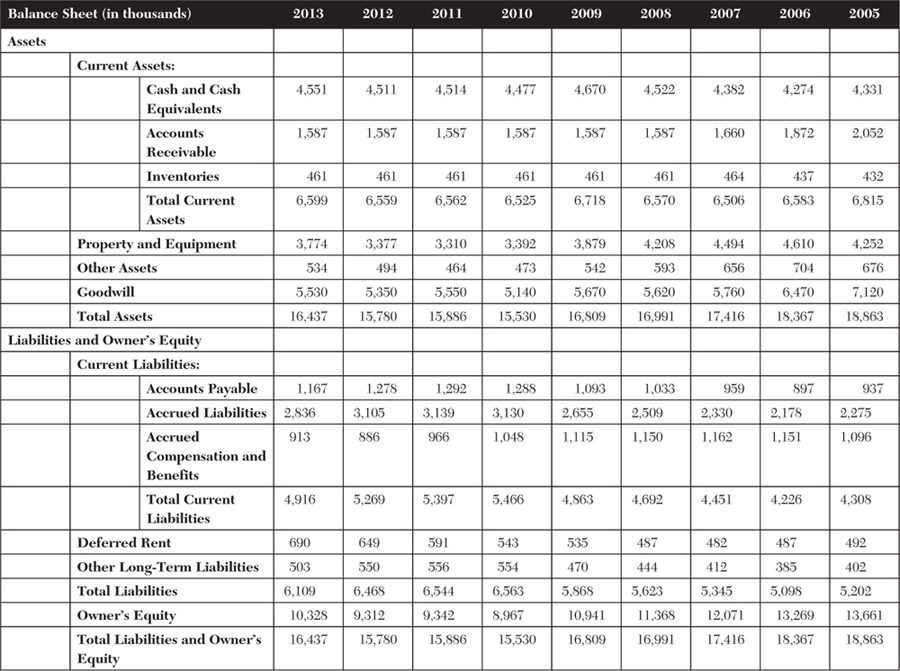Joe’s Coin Shop: Entry into Online Auctions
Charles A. Wood, Duquesne University
Introduction
Joe Murphy, founder of Joe’s Coin Shop, sits back in his office chair to reflect on his 15-year-old business. It sure has been tough over the last decade, but the last couple of years have shown a profit. Joe thinks it is going to finally be okay, but he still wonders about the future direction of his company.
Company History
Joe remembered earning an MBA from a local college and working for a major corporation before deciding to go into business for himself. Joe thought that there could be nothing better than running a rare coin shop. Joe had been collecting coins since the fifth grade, and he knew all about how they are graded, what dealers typically offer for coins, and what they sell them for. It seemed like a natural fit. For the first five years, Joe had done really well for himself. He steadily improved sales and profitability up until his pinnacle in 2005, when Joe’s Coin Shop had just broken $1 million in net income. Joe was making much more money than he made in the corporate world, and he was doing what he loved.
Joe took pride in providing for his customers—giving them the best advice, delivering a great selection, and allowing customers to purchase items on credit, which seemed to boost sales and encouraged customers to browse through his store. Unlike many stores that sold rare coins, Joe never took advantage of his customers’ inexperience. He took great care to explain the difference between “blue book value,” or the retail price, and “red book value,” or the price a coin store should be willing to pay for the coin. If a customer did not know the value of a coin, Joe would examine it and be upfront about it, and truthfully describe the value rather than try to low-ball the estimate, as other dealers often do.
The customers appreciated Joe’s honesty and friendliness. Many hung out at Joe’s store on the weekends or every once in a while after work. Some brought him coffee or cookies, and they all sat around talking about coins, investing, and their individual collections.
But in 2006, sales just seemed to drop off. Customers who used to come to his store regularly simply stopped coming. In 2006, net income was reduced to one-eighth of the previous year, and during 2007–2009, the business lost more than $200,000 each year, despite cuts made to operating expenses and increases to liabilities. Joe just thought it was a momentary downturn, but he wondered how long he could hemorrhage money. Then, in 2010, at the height of a particularly bad recession, Joe’s Coin Shop lost around $754,000. The record business profit from 2005 was wiped out during the 2007–2010 downturn. Business equity was down $330,000 from its high point, and times were bleak. Joe was worried that he would have to close the shop. Joe kept cash flow in the business by greatly increasing the debt load, but this could only go on for so long before Joe went bankrupt.
In late 2010, Joe decided to hire Anita Jones, a marketing consultant, to help him reach the customers who used to come to his store. Anita was certainly expensive, and Joe was worried about spending hundreds of thousands of dollars on a marketing campaign when times were so tough, but Anita was as good as she promised. Her marketing plan came through and helped bring the business back from the brink and into the black in 2012 and 2013. Joe is finally able to start paying down the liabilities that Joe’s Coin Shop accrued during the 2006–2011 period. Business, however, is still not at the level that it once was, and Joe realizes that, while he now has some breathing room, something needs to be done if he is going to stay solvent over the long term. Exhibit 1 shows the sales revenue and net income from 2005–2013.
Market Survey
Anita surveyed past and present customers. In this market survey, Anita divided subjects into four groups:
• Non-Customers—Coin collectors (current or previous) who have never shopped at Joe’s Coin Shop
• Former Customers—Coin collectors who have shopped at Joe’s Coin Shop but have no plans to do so in the future
• Infrequent Customers—Coin collectors who shop at Joe’s Coin Shop as well as other channels to buy rare coins
• Loyal Customers—Coin collectors who only shop at Joe’s Coin Shop
The purpose of the survey was to determine why Joe’s business was dropping off. Exhibit 2 shows the dominant answers to the questions from the market survey.
Anita and Joe discussed how Joe’s Coin Shop is losing out to online coin stores and online auctions. Joe agrees that this might be the case. Joe has always contended that a traditional coin shop with great service and a personal touch would be more appealing to his clients, and indeed, some of them have expressed that exact thought. Joe has so far resisted going online, and only has a simple website that talks about how he values the customer and gives the store’s address and phone number, along with directions to the store. Nonetheless, Joe sees the writing on the wall. It is going to be more difficult to get customers in the future, and Anita has convinced him that he needs to start selling online to capture customers who are unwilling or unable to purchase inside his store.
But Joe really likes having a store, and he thinks that current customers enjoy it as well. He would hate to give that up. (Joe told Anita, “If I have to do all my work online, I would close up the business and go back to the corporate world!”) Because Joe feels so strongly about this, Anita has suggested that Joe use the store to help. She suggested that he could advertise heavily within the Joe’s Coin Shop store rather than covertly go online under another identity, and that a “bricks and mortar” store presence could add to the attraction of the website and to Joe’s online auctions. Joe agrees. Joe also wants to make sure that he does not betray existing loyal customers by selling the same coins for less money in a different environment under an assumed name. Joe feels strongly that existing customers should be rewarded for staying with him, and not be denied opportunities that (hopefully) new customers will have, even if it costs him a little in the margin. Thus, existing customers should always be informed about new online coin collecting opportunities at Joe’s Coin Shop.
Costs of an Online Market
Anita has suggested a two-pronged attack:
• First, an online storefront will sell items that are available at the store, but at the same price as the store. Depending on the level of interest, Anita encourages Joe to consider slightly lowering the prices on the site and at the store.
• Second, online auctions will allow Joe to reach a larger audience; they can be used as a vehicle to drive customers to Joe’s site, where they can buy coins immediately rather than waiting for an auction to end. Some auction houses also allow customers to set up an online store presence within the auction house, so that if a customer wants to see auctions available from Joe’s Coin Shop, she can simply go to the Joe’s Coin Shop online store. Anita thinks that this is a good idea.
Joe’s margins are at around 53% right now. If he were to sell in online auctions, he might increase the quantity of sales to previous levels, but at a reduced margin. Furthermore, both Joe and Anita feel that an online presence will eat into at least some of their sales as loyal customers purchase from them in online auctions. Anita has often said, “If we don’t cannibalize ourselves, someone else will.” Anita estimates that there will be a 25% migration from in-store to online, but also a 20% migration from the auction site to the Joe’s Coin Shop’s website, as some coin collectors do not want the uncertainty of the online auction.
Anita has explained that an online presence will require a website with online order capabilities, security, and transaction retrieval, which Anita suggests will cost around $200,000, plus an additional employee (estimated at $100,000 per year, including salary and benefits) to maintain the website, as well as enter information, keep the site active, and enter auction data while Joe deals with customers who enjoy the “bricks and mortar” store. In addition, auction participation will require additional listing fees for each item sold. Exhibit 3 shows a typical fee structure for an online auction.
Exhibit 3 shows a listing fee that depends on the starting bid. Then, if an item is successfully sold to a bidder, the seller owes a sales fee that consists of a fixed fee plus a percentage of the final bid amount. Finally, if a seller wants to place a secret reserve price on the coin for sale that the winning bid must surpass before the item is sold, a reserve fee is added. Listing fees and reserve fees are due immediately, whereas sales fees are due upon a successful sale.
Data Analysis
To help Joe with the planning, Anita has Joe purchase a data set of 2006 auction transactions. Analyzing this data will determine a pro-forma income statement (similar to a projected budget) to forecast the profits and expenses from the online information to discover how much income an online presence will deliver compared to the costs of implementing such a system.
The data looks daunting. There is so much data, separated into worksheets with rows in one worksheet pointing to several rows in the other worksheets. Anita and Joe identify five tasks for each question that need to be answered:
1. First, you must decide what questions you want answered. Remember, the questions should not be dependent upon the data set. Joe has several questions:
a. What revenue can I expect to make compared to the book value of the coin? Do factors such as book value, number of bids, and so on, increase this revenue?
b. Are there any factors that can help guide me to making more money per auction or to attracting more bidders to my auction?
c. How many auction and non-auction coins do I need to sell online to break even with the cost of an online presence?
d. Do bidders cluster into groups, and how can high-paying groups be targeted?
e. How do losing bidders in one auction behave in the next auction when trying to buy the same item?
f. How does seller reputation affect sales? How does bidder reputation affect sales? Does the reputation score really measure the reputation?
2. Decide how you can answer the questions by using the data set.
3. Anita and Joe must take all this data and place it into a single data set for each question. Anita feels more comfortable staying with the spreadsheet, and has started coding VLookup commands and pivot tables to help with the analysis. Joe feels more comfortable with a database, and has migrated the spreadsheet data there and is using database views and queries, along with some SQL (the computer language of databases), to retrieve the data he needs.
4. Joe realizes that each coin is different from other coins, and there must be a way to standardize any data set. For instance, a 1797 penny in great condition worth $21,000 is very different from a 1909 penny in poor condition worth $15. If the 1909 penny sells for $18, that’s much better than the 1797 penny selling for $20,098. There needs to be a way to compare expensive and cheap coins across the data set without simply saying that “this coin sold for more than that coin.”
5. After a data set has been created for a specific question, that data set needs to be analyzed. Anita has informed Joe that simple averages are not enough, and will probably lead him down the wrong path, or leave some paths unexplored. Regression analysis, cluster analysis, and maybe even some time series analysis or panel studies must be in order. There are factors that can corrupt analysis, such as endogeneity or multicollinearity, that need to be considered, as well.
Joe is most concerned with measuring the critical success factors. He knows that he needs to measure and monitor online sales as they approach profitability, and he needs to know what that level will be and how far away from (or beyond) that level Joe’s Coin Shop is right now.
Anita and Joe certainly have some work ahead of them.







